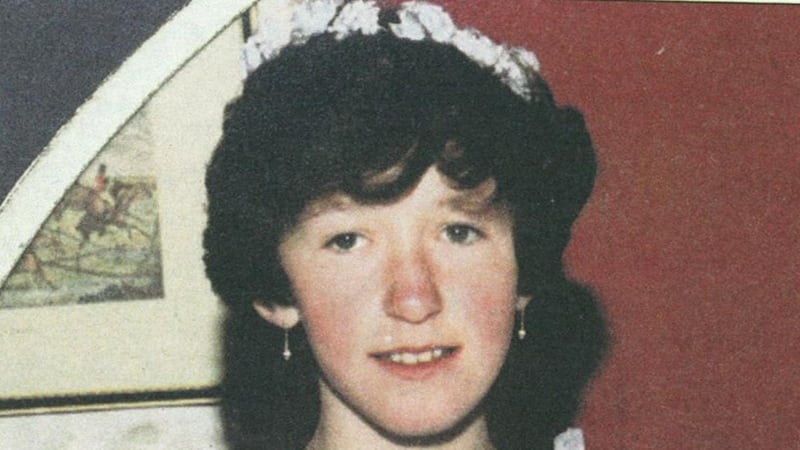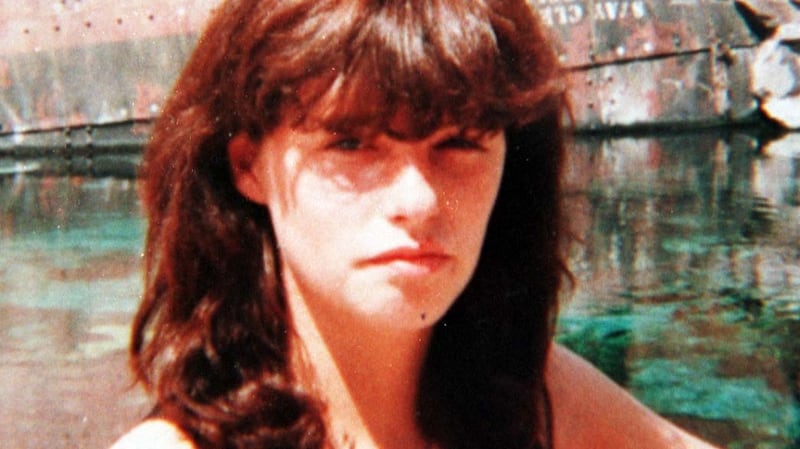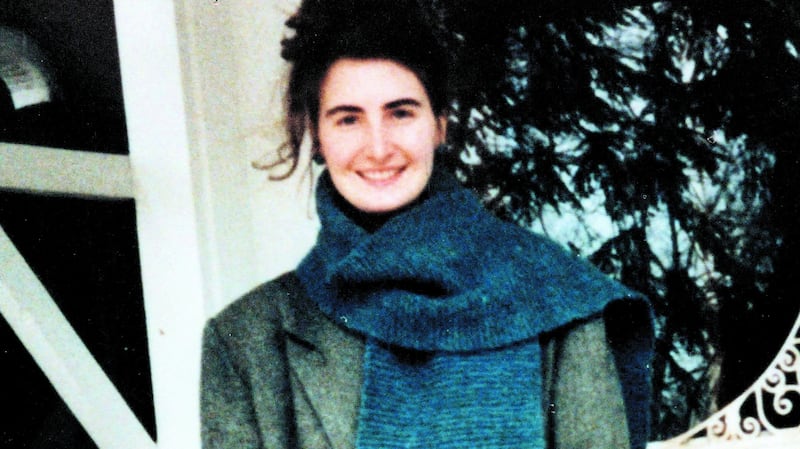Their names have become painfully familiar over the years and decades. Annie McCarrick. Deirdre Jacob. Fiona Pender. Ciara Breen. Jo Jo Dullard. Fiona Sinnott. Eva Brennan. Imelda Keenan.
These are the women who vanished in Ireland at various times of the day and night, and were never seen again by those who loved them. The last person they would have seen is the person who murdered them. None of these eight bodies have been found. Eight unsolved crimes. Eight families and their wider communities disrupted forever.
Now these women, and others who went missing but were later found dead, are the subject of a new audiobook from Audible. The Vanishing Triangle by Northern Irish writer Claire McGowan was released this month as a six-hour audio-only book.
McGowan (39) grew up in Rostrevor, Co Down, and is the author of 10 crime novels. She lives in London, where she talked to me by phone.
"I had never thought to write non-fiction," she says. McGowan's books are published by Amazon. Some two years ago, when she and her editor were at a crime-writing festival run by Amazon, they heard that Audible was looking for new audiobooks. (Audible is now owned by Amazon.)
"My editor was asked if there were any true-life crimes I was interested in that had never been solved. The very first thing that came to mind were the cases of these missing women in Ireland. I mentioned it and immediately everyone was very interested because their stories are practically unknown in England. Everyone was quite surprised that news of many of these cases had never made it over the water."
The book’s title comes from the fact that many of the missing women disappeared in the northeast, east and southeast of the country; a rough geographical triangle. It was clear from the beginning that McGowan would not be attempting to investigate any of these cases, nor interview any family members.
“It wouldn’t be about looking at a suspect and dissecting the evidence, because in most cases, there isn’t any evidence, unfortunately. So I decided to look at it thematically; the different reasons why they might have happened, and also, why is it that these cases are still unsolved.”

What makes an audio-only book different to a printed book also available on audio? “I don’t know if I wrote it in any particular way differently from my published books,” McGowan says. “I suppose the main difference is that it is quite a personal story, and I narrated it. I recorded it in December, in a studio in London.”
Apart from the occasional piece of moody music, The Vanishing Triangle doesn’t have any other kind of audio within it. It’s a straight narration by McGowan. Yet the simple intimacy of an Irish-accented voice telling the stories of fellow Irish women, some of whom would now be contemporaries of hers had they not disappeared, is engaging.
The case that resonates the most for McGowan is that of Ciara Breen. Ciara Breen, then 17, went missing in 1997 in Dundalk. She had left her family home at night to meet someone, and was never seen again.
“Ciara was really close to my age and lived really near me, but I had never heard anything about her case at the time. We used to go to some of the same discos, and I don’t remember anyone ever saying, ‘This girl has gone missing’.”
For her research, McGowan looked at archival material and talked to a couple of retired detectives who had worked on some of the cases.
“I got the impression that they were quite haunted by the cases, and that they had played on their minds over the years. They remembered a huge amount of detail about them, even though it was such a long time ago.”
Abducted in daylight
Deirdre Jacob, then 18, went missing in 1998 in the middle of the day, close to her home in Newbridge, where she had been running errands.
It seems unfathomable that a young woman could, as was suspected in Deirdre Jacob’s case, be abducted in daylight from a public road. And yet, this must have been what happened.
McGowan also tells the story of a young woman 20 years later who was abducted during in daylight and murdered. Jastine Valdez (24) was taken by Mark Hennessy in his car shortly after she stepped off a public bus in Enniskerry, Co Wicklow in 2018. Her killer was subsequently traced and shot by a garda after a confrontation, and her body was found. It was later estimated Hennessy had murdered her less than one hour after he abducted her.


“I put this story in because Jastine Valdez’s case shows how someone was abducted in broad daylight and murdered. I would guess all these cases were opportunistic. And in some of them, someone was driving around, looking for a woman on the road, just as happened to Jastine Valdez.
“I think probably four or five of the women were taken off the road by someone in a car. Someone who maybe called them over for directions, and then pulled them in through the window.”
McGowan, who grew up not far from the Border, reflects a lot in the audio on its fluidity. She wonders how much co-operation there was between the police forces in the 1980s and 1990s, when many of these women went missing.
“The police forces on the two different sides of the Border seemed to treat it as if it was uncrossable; as if you couldn’t quite easily drive over it. I am not sure how closely they worked together on these cases. The IRA, for instance, were known to move people around the country during that time if they had done something to a woman or a child.”
‘If a body is found’
In the audio book, McGowan also talks about Arlene Atkinson, who was 15 when she went missing in 1994. "Yet she never gets grouped in with these women, but it was the same time," she points out. Arlene Atkinson, from Castlederg, Co Tyrone, vanished after crossing the Border into Donegal to go to a disco. Her body was never found.
McGowan theorises that at least some of these missing women were murdered by the same person. Given the decades that have passed, it is impossible to conclude anything other than that these women were murdered.
“I have a hard time believing that each of these missing eight women was murdered by eight different men. I think some of them were done by the same person,” she says.
Will any of these cases ever be solved? Of the eight women she profiles in detail – Annie McCarrick, Deirdre Jacob, Fiona Pender, Ciara Breen, Jo Jo Dullard, Fiona Sinnott, Eva Brennan, Imelda Keenan – no bodies have been found. There have been rumours in some cases about who was responsible, but no one has stood trial for any of these murders.
“One of the detectives I talked to, he summed it up when he said the only way these cases could be solved is if a body is found, which always could happen. Or if somebody decided to talk. He thought that it was very likely that somebody did know something in each case, but had stayed silent all this time.
“It seems kind of incredible that nobody knows anything. It’s Ireland. People always know your business,” she says. “There must be witnesses out there who know something and who have not yet come forward.”
The Vanishing Triangle by Claire McGowan, is available on Audible


















